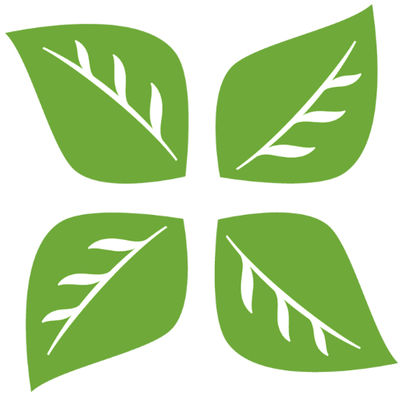预约演示
更新于:2025-12-10
Aloxistatin
更新于:2025-12-10
概要
基本信息
非在研机构- |
权益机构- |
最高研发阶段临床前 |
首次获批日期- |
最高研发阶段(中国)临床前 |
特殊审评- |
结构/序列
分子式C17H30N2O5 |
InChIKeySRVFFFJZQVENJC-IHRRRGAJSA-N |
CAS号88321-09-9 |
关联
1
项与 Aloxistatin 相关的临床试验DRKS00028033
CoViD-19 treatment by Aloxistatin-Inhalation – a phase I trial to evaluate the safety of inhalable aloxistatin (E64d) - COALITION-I
开始日期2023-06-05 |
申办/合作机构- |
100 项与 Aloxistatin 相关的临床结果
登录后查看更多信息
100 项与 Aloxistatin 相关的转化医学
登录后查看更多信息
100 项与 Aloxistatin 相关的专利(医药)
登录后查看更多信息
436
项与 Aloxistatin 相关的文献(医药)2025-08-02·ChemMedChem
Deciphering Therapeutic Targeting of Cathepsin B Using Repurposed Drug Darifenacin
Article
作者: Kandasamy, Thirukumaran ; Mukhopadhyay, Sayantani ; Iyer, Parameswar Krishnan ; Ghosh, Siddhartha Sankar
Cathepsins are lysosomal proteases with well‐documented roles in the progression of various cancers. Among them, cathepsin B (CTSB), a cysteine protease, is notably involved in the development of breast cancer and neuroblastoma. This article, explores the potential of darifenacin as a repurposed therapeutic targeting CTSB, using molecular docking and simulation studies which demonstrate a significantly lower binding energy against CTSB (−456.268 kJ mol−1) compared to its known inhibitor, aloxistatin (−36.601 kJ mol−1). The cytotoxic efficacy of darifenacin is evaluated on IMR‐32 (neuroblastoma) and MCF‐7 (breast cancer) cells, yielding half‐maximal inhibitory concentrations (IC50) of 38.14 and 39.96 μM, respectively. Darifenacin effectively inhibits CTSB enzymatic activity by ≈1.82‐fold and ≈1.75‐fold in IMR‐32 and MCF‐7 cells, respectively, triggering intracellular reactive oxygen species generation, mitochondrial membrane potential depolarization, and cell cycle arrest. These events culminates in apoptosis‐mediated cell death, with apoptotic populations reaching 51.39% in IMR‐32 and 40.6% in MCF‐7 cells, respectively. Additionally, darifenacin disrupts lipid droplet accumulation, cellular migration, and colony‐ and sphere‐forming abilities in both cell lines. Overall, this article identifies darifenacin as a promising therapeutic agent against CTSB‐driven cancer progression.
2025-07-03·Nature
Substrate recognition and cleavage mechanism of the monkeypox virus core protease
Article
作者: Jia, Handi ; Liu, Hong ; Wu, Botao ; Xu, Jin ; Mao, Shengjiang ; Hu, Wanlong ; Zhang, Leike ; Hu, Shulei ; Wang, Haofeng ; Yang, Kailin ; Wang, Wei ; Nguyen, Henry C ; Cui, Wen ; Jia, Menghan ; Yin, Yue ; Zhang, Yumin ; Dong, Xuxue ; Yang, Bei ; Xie, Xiong ; Zhang, Xiaoyu ; Xiao, Gengfu ; Zhou, Hao ; Rao, Zihe ; Yang, Xiuna ; Sun, Zhanqi ; Liu, Xiaoce ; Duan, Yinkai ; Dai, Wenhao ; Gao, Yan ; Li, Dongxu ; Xiang, Yingchun ; Yang, Haitao ; Shang, Weijuan ; Cao, Junyuan ; Zhang, Mingjing ; Lan, Weiqi ; You, Tian ; Ji, Xiaoyun
Poxviruses cause severe diseases, including smallpox and mpox, that pose major threats to human health. The poxvirus core protease (CorePro) is essential for viral maturation and is highly conserved in poxviruses, making it an attractive antiviral target1. However, the structure of CorePro remains unknown, hampering antiviral development. Here we determined the apo structure of monkeypox virus (MPXV) CorePro and the structure of CorePro in a complex with the inhibitor aloxistatin, a drug candidate for muscular dystrophy2. These structures show that CorePro forms a homodimer that features a unique 'dancing couple' fold. The catalytic intermediate state of CorePro was characterized by an aldehyde derivative from a natural substrate (I-G18). This derivative binds covalently to the catalytic Cys328, shifting the active site of the viral protease from a closed conformation in the apo form to a favourable open conformation upon substrate binding. On the basis of the CorePro-I-G18 complex, we designed a series of peptidomimetic inhibitors with a nitrile warhead, which could covalently anchor with the catalytic Cys328. These compounds inhibit CorePro with half-maximal inhibitory concentrations of 44.9-100.3 nM, and exhibit potent and broad anti-poxvirus activity. Our studies provide a basis for designing wide-spectrum inhibitors against poxvirus infections.
2025-07-01·PHYTOMEDICINE
Gluconic acid alleviates hypertrophic scar formation through binding PLOD1, reducing p-AKT signaling and activating autophagy
Article
作者: Chen, Ling ; Sun, Yue ; Zhang, Enyuan ; Zou, Jijun ; Li, Jun ; Zeng, Siqi ; Yan, Qiyue ; Li, Jingyun
BACKGROUND:
Hypertrophic scarring represents a major clinical challenge worldwide, with current treatment strategies showing limited effectiveness. Gluconic acid (GLA), a naturally occurring glucose metabolite found in fruits, honey, kombucha tea, and wine, may provide new approach for scar treatment.
PURPOSE:
This study aimed to investigate the anti-scarring properties of GLA and underlying molecular mechanisms.
STUDY DESIGN:
A comprehensive experimental study combined in vitro hypertrophic scar fibroblasts and in vivo rabbit ear scar model assays.
METHODS:
Hypertrophic scar fibroblasts were treated with GLA. Cell counting kit-8 (CCK-8) and flow cytometry were used to evaluate cell viability and apoptosis. The collagen and ACTA2 (actin alpha 2, smooth muscle) expressions were analyzed by qPCR and western blot. A rabbit ear scar model was applied to assess GLA's effects on scar formation and collagen deposition. Transcriptome sequencing, pull-down assays, western blotting and rescue experiments using AKT agonist SC79 were employed to identify GLA-regulated pathways. Molecular docking, pull-down, cellular thermal shift assays and co-localization studies were used to assess GLA's interaction with PLOD1 (procollagen-lysine, 2-oxoglutarate 5-dioxygenase 1). E64d, MG132 and QX77 were added to analyze GLA's function mechanisms on PLOD1 protein expression. Autophagy activation was evaluated through autophagic flux assay, transmission electron microscopy and autophagy related protein expression analysis. Mitochondrial membrane potential was detected by JC-1 staining.
RESULTS:
GLA suppresses collagen and ACTA2 expressions and exerted a mild inhibitory effect on cell proliferation or apoptosis in hypertrophic scar fibroblasts. And it diminishes scar formation and collagen content in the rabbit ear scar model. AKT (protein kinase B) and phosphorylated AKT (p-AKT) levels were significantly reduced after GLA treatment. Rescue experiments confirmed that GLA's effects are mediated through the AKT pathway. Moreover, GLA interacts with PLOD1, resulting in its autophagy-lysosomal degradation. Additionally, GLA treatment activated autophagy, reduced mTOR protein expressions, and had no significant effect on mitochondrial membrane depolarization, further contributing to its anti-scarring effects.
CONCLUSION:
Our findings demonstrate that GLA attenuates hypertrophic scarring through multi-modal mechanisms involving PLOD1 targeting, AKT/mTOR pathway inhibition, and autophagy activation. This study provides both mechanistic insights and therapeutic potential for GLA in scar treatment.
4
项与 Aloxistatin 相关的新闻(医药)2025-09-02
·叮当学术
自噬是一种动态的细胞事件,参与细胞内长寿命蛋白质和细胞器的降解。随着研究的深入,越来越多的自噬研究采用生化方法(如通过 Western blot 检测自噬相关蛋白),因为这种方法简便且客观。在这些方法中,微管相关蛋白轻链3(LC3,总量),即哺乳动物中与酵母 Atg8 同源的蛋白,是最常用、也非常有价值的自噬研究工具。除此之外,电子显微镜和免疫荧光等方法也可用于检测自噬。
本文描述了三种在细胞中检测自噬的常用且简单的实验方案:LC3B 免疫荧光、Western blot 以及吖啶橙(acridine orange)检测。尽管这三种方法经常用于提供自噬的基础信息,但必须注意,它们并不足以精确揭示自噬通量的细节,因为该过程极为复杂。此外,吖啶橙检测仅能作为自噬的辅助方法,因为它对其他细胞器(如溶酶体)也有较高的亲和力。若要进一步研究某种化合物对自噬通量的作用,建议采用额外且更为复杂的实验方法。本文所提供的实验方案可作为研究人员的起点,用于快速判断某种化合物是否能够在细胞培养体系中影响自噬。🔹 材料与试剂
基础试剂:70% 乙醇、PBS、DMEM 培养基
固定/封闭相关:多聚甲醛、100% 甲醇、牛血清白蛋白(BSA)、脱脂奶粉
关键抗体:
兔抗 LC3B 抗体
荧光标记二抗
HRP 标记二抗
细胞裂解与检测:M-PER 裂解液、蛋白酶 & 磷酸酶抑制剂、上样缓冲液、ECL 显色试剂
实验核心工具分子:吖啶橙(Acridine Orange)、E64d/pepstatin A
电泳/转膜耗材:预制胶(4–15% TGX)、电泳 & 转膜缓冲液
封片与缓冲液:
ProLong® Gold 抗淬灭封片剂(含 DAPI)
TBS 缓冲液(50 mM Tris-Cl + 150 mM NaCl,pH 7.5)
TBS-Tween(TBS + 0.1% Tween-20)
AbDil-Tw(TBS + 0.1% Tween-20 + 2% BSA + 0.1% NaN₃,过滤后,储存于 4 °C)
TBS-Tx(TBS + 0.1% Triton X-100)
AbDil-Tx(TBS + 0.1% Tween-20 + 2% BSA + 0.1% NaN₃,过滤后,储存于 4 °C)
👉 小贴士:吖啶橙不仅能标记自噬小体,还会染到溶酶体,所以通常作为辅助方法。🔹 仪器设备细胞培养耗材:
24 孔/12 孔板、圆形盖玻片、载玻片、离心管基础工具:
尖头镊子、移液管、真空泵(带收液瓶)成像设备:
荧光显微镜蛋白检测:
SDS-PAGE 电泳槽、电源、转膜装置、PVDF 膜细胞培养必备:
CO₂ 培养箱、超净工作台
👉 实验中常用的“湿润培养盒”可以自己动手做:一个 15 cm 平皿 + 封口膜 + 湿纸巾,就能轻松实现抗体孵育避光保湿。🔹软件(Software)
MetaMorph🔹实验步骤(Procedure)A. LC3B 免疫荧光
在 24 孔板的每个孔中放置一片圆形盖玻片,加入约 0.5 ml 70% 乙醇消毒 1 分钟。吸去乙醇并静置 5–10 分钟使其干燥。细胞在实验前一天接种于 24 孔板中,以便其黏附在盖玻片上。(具体的接种时间取决于药物处理的时间,需确保最终细胞密度适合观察,即约 80–90% 融合度)。
实验当天,根据需要的时间,用不同浓度的小分子化合物处理细胞。
用 0.5 ml 预冷的 100% 甲醇(-20 °C 预存)固定细胞 5 分钟。由于甲醇温度较低且固定时间短,此步骤可在室温下操作。或者,也可用 PBS + 4% 多聚甲醛在室温下固定 20–30 分钟,然后用 TBS-Tx 透化 20 分钟。
用 0.5 ml PBS 清洗一次,再加入 0.5 ml AbDil-Tx 进行封闭。封闭步骤可在室温 30 分钟至 4 °C 过夜。例如,可选择 RT 30 分钟、1 小时、2 小时,或在 4 °C 孵育 2 小时至过夜。
配制一抗。Cell Signaling 提供的 LC3B 抗体可按 1:200–1:500 稀释于 AbDil-Tx 中。通常每片盖玻片需要 30–100 μl。
将盖玻片转移至湿润培养盒。该装置可由 15 cm 培养皿改造:底部放置一块能覆盖的方形或长方形封口膜,用手指和镊子压紧,使其紧贴底部。盖玻片可放在封口膜上,液体加在其上。使用一片锡箔覆盖培养皿盖以避光。保持湿度防止抗体蒸发。
将稀释好的一抗(LC3B 抗体)滴加在盖玻片上,于室温孵育 1–4 小时,或 4 °C 过夜。若过夜孵育,需确保每片盖玻片至少加 50 μl,并保持湿润,以防抗体蒸发。
同时,准备二抗:将荧光标记的抗兔二抗稀释于 AbDil-Tx 中。
一抗孵育结束后,使用转移移液管加入 TBS-Tx 清洗盖玻片,同时用与真空泵相连的管路移去洗液。每片盖玻片需用约 2 ml TBS-Tx 清洗 3 次。
滴加稀释好的二抗至盖玻片上,于室温孵育 1–2 小时。孵育后同样方法清洗。
在孵育结束前 10 分钟,将 ProLong® Gold 抗淬灭封片剂(含 DAPI)从冰箱取出,使其恢复至室温。取约 2–3 μl 滴于载玻片上。
尽可能吸干盖玻片上的液体,将其细胞面朝下贴在载玻片上的封片剂滴液上,使其与封片剂直接接触。
ProLong® Gold 抗淬灭封片剂通常需室温下过夜固化。将载玻片置于抽屉或避光处过夜干燥。
次日,取出载玻片,置于荧光显微镜下观察并拍照(图 1)。
图 1. LC3B 免疫荧光显示 Torin2 在细胞中诱导自噬。HeLa 细胞用不同浓度的 Torin2 处理 3 天后,使用抗 LC3B 抗体和 DAPI 染色。B. LC3B 蛋白印迹(Western blot)
在实验前一天,将组织培养细胞接种于 12 孔板(或 6 孔板)中,以便细胞能够黏附在培养板上。
实验当天,在处理前 1 小时向细胞中加入 10 µg/ml 的 E64d/pepstatin A,以增强自噬周转。随后,向细胞中加入不同浓度的小分子化合物。
经过所需的孵育时间后,用 PBS 清洗细胞一次。然后加入裂解液直接裂解细胞(100–200 µl M-PER 裂解液,内含蛋白酶抑制剂和磷酸酶抑制剂),在冰上(或 4 °C)孵育 10–20 分钟。
孵育结束后,将细胞裂解液收集到 1.5 ml 离心管中,在 4 °C 下最高转速离心 1 分钟,以去除细胞碎片。
将上清液转移至新管中,根据需要进行蛋白浓度标准化,然后加入上样缓冲液。对于处理时间仅为数小时的药物实验,通常不需要标准化,因为细胞数不会明显变化。但若处理时间超过数小时,则需确保样品间蛋白浓度一致。之后样品煮沸并上样至 SDS-PAGE。检测 LC3B 条带时,15% SDS-PAGE 或 4–15% Mini-PROTEAN TGX 预制胶均可良好分离。
按照标准 Western blot 实验流程,将胶转移至 PVDF 膜。
将 PVDF 膜放入 TBS-Tween(TBS-T)中,加入 5% 脱脂奶粉,于室温摇床上封闭 1 小时。
用 TBS-T 清洗 3 次,每次 5 分钟。将 LC3B 一抗按 1:1,000 稀释于 AbDil-Tw 中备用。
将膜放入稀释好的一抗溶液中,于室温孵育 2–3 小时,或 4 °C 过夜孵育。
再次用 TBS-T 清洗 3 次,每次 5 分钟。然后将 HRP 标记的二抗按 1:1,000 稀释于 AbDil-Tw 中备用。
将膜放入稀释好的二抗溶液中,于室温孵育 1 小时。
再次用 TBS-T 清洗 3 次,每次 5 分钟。
用纸巾轻轻擦干膜表面,将膜正面朝上平放在一片保鲜膜上。
加入配制好的 ECL 显色液检测蛋白。显色后轻轻倒去多余液体,用纸巾和 Kimwipes 擦干膜。
用保鲜膜将膜包裹好。
根据需要,将其曝光于 X 光胶片,或使用成像仪进行检测(图 2)。
图 2. Western blot 检测 LC3 蛋白显示 Torin2 在细胞中诱导凋亡和自噬。所示细胞系用不同浓度的 AZD8055 或 Torin2 处理 3 天后,进行 Western blot 分析,检测使用了抗 LC3B 和抗 α-微管蛋白抗体。C. 吖啶橙(Acridine orange)检测
组织培养细胞在实验前一天接种于 24 孔板的盖玻片上(具体方法与 LC3B 免疫荧光 部分相同)。
实验当天,用不同浓度的小分子化合物处理细胞,处理至设定时间后,加入 1 μg/ml 吖啶橙,继续孵育 15 分钟。
用 PBS 清洗细胞一次,再用 PBS + 4% 多聚甲醛固定细胞,随后用 TBS-Tx 清洗,然后与 步骤 A11 和 A12(LC3B 免疫荧光中的封片步骤) 相同方法,将细胞封片于 ProLong Gold(含 DAPI)中。
使用荧光显微镜拍照(图 3,左图)。
用 MetaMorph 软件对每个视野中的吖啶橙总荧光进行定量,并除以该视野中细胞总数。结果再归一化到 DMSO 处理组,以显示吖啶橙荧光的倍数变化(图 3,右图)。
图 3. 吖啶橙检测显示 Torin2 在细胞中诱导自噬。HeLa 细胞用不同浓度的 Torin2 处理 3 天后,用吖啶橙和 DAPI 染色并拍照。
自噬作为一种动态而复杂的细胞过程,既关系到蛋白质和细胞器的更新,也与多种疾病机制密切相关。通过 LC3B 免疫荧光、Western blot 和吖啶橙染色 等方法,我们能够从不同角度捕捉自噬的动态变化。需要注意的是,这些方法各有优劣,往往只能提供自噬状态的一个“切面”,若要深入研究通量变化,还需结合更复杂的实验手段。科研从来没有捷径,但每一个扎实的步骤,都是通往突破的基石。
参考资料:Fan Q Q, Chen Y M, Fu Y S, et al. Enhancement of cognitive function in mice with Alzheimer’s disease through hyperbaric oxygen-induced activation of cellular autophagy[J]. Frontiers in Aging Neuroscience, 2024, 16: 1418081.
2025-04-25
买科研服务(代计算、代测试、超算机时),送老李校长“科研理工男士情感课”第一性原理计算解决50年悬而未决难题:半导体中铜为何扩散更快?Ab initio及第一性原理入门参考书介绍《海贼王》告诉你,做科研为什么不能闭门造车……985博导亲测:用DeepSeek写国自然本子,3天完成30天工作量来自公众号:深究科学本文以传播知识为目的,如有侵权请后台联系我们,我们将在第一时间删除。4月22日,上海科技大学联合中国科学院上海药物研究所、清华大学、中国科学院武汉病毒研究所和重庆医科大学等多家单位在《自然》(Nature)上共同发表了题为“Substrate recognition and cleavage mechanism of the monkeypox protease, Core protease”的最新研究成果。联合攻关团队首次证实天花病毒、猴痘病毒等正痘病毒属的核心蛋白酶(Core Protease,CorePro)是一个全新的广谱抗病毒药物靶标;解析了猴痘病毒核心蛋白酶的高分辨率三维空间结构,揭示了其识别底物的分子机制;在此基础上,研究团队成功设计了多个具有强效广谱抗病毒活性的小分子抑制剂并阐明其精确作用机制。该系统性研究为广谱抗正痘病毒(如猴痘病毒)药物的开发奠定了重要基础。上海科技大学为第一完成单位。正痘病毒属包含天花病毒、猴痘病毒等重要的人类病毒,它们是一类有包膜的双链DNA病毒。天花病毒引发的天花曾经是人类历史上极具毁灭性的传染病之一,据不完全统计,曾导致数亿人死亡。猴痘病毒(mpox virus, MPXV)于1958年首次在实验猴群中被分离鉴定,1970年报道了首例人感染病例。猴痘病毒感染后的典型症状包括高热、持续性头痛、特征性淋巴结肿大以及渐进性皮肤损伤等,严重时可引发脑炎、败血症、永久性视力丧失甚至死亡。2022年5月非流行区爆发疫情以来,猴痘病毒确诊病例数呈指数级增长。世界卫生组织(WHO)分别于2022年7月23日和2024年8月15日两次启动最高级别警报,将猴痘疫情列为"国际关注的突发公共卫生事件"(PHEIC)。截至最新统计,131个国家和地区累计报告超过13.4万例实验室确诊病例,其中死亡291例。目前针对猴痘病毒感染的预防和治疗手段非常有限。因此,发现和确证抗正痘病毒的新型药物靶点,以及开发强效抗病毒抑制剂,对当前猴痘疫情的有效控制具有现实紧迫性,同时为应对其他正痘病毒的威胁提供保障。正痘病毒属的成员都编码一种高度保守的核心蛋白酶(在痘苗病毒和猴痘病毒中称为I7,在天花病毒中称为K7),这种蛋白酶对于病毒成熟和感染性子代病毒的产生至关重要。核心蛋白酶能够精准识别Ala-Gly-Xaa序列并在甘氨酸(Gly)位点酰胺键位置进行切割,驱动病毒粒子从不具有感染性的未成熟病毒形态(IV)转变为具有感染性的成熟病毒形态(IMV)。核心蛋白酶的突变或缺失会导致病毒失去感染能力,提示猴痘病毒核心蛋白酶是一个潜在的抗病毒药物开发靶标。研究团队成功表达并纯化了具有活性的猴痘病毒核心蛋白酶,结合单颗粒冷冻电镜和X射线晶体衍射技术,解析了其高分辨率的三维结构(图1)。核心蛋白酶呈现出二体的组装模式,每个单体包括N端结构域(N-terminal domain, NTD),催化结构域(catalytic domain, CD)和C端结构域(C-terminal domain, CTD)。活性中心位于催化结构域,包含一个催化三联体Cys328-His241-Asp258。猴痘病毒核心蛋白酶的二体相互作用模式与其他重要人类病毒的蛋白酶不同,是核心蛋白酶结构稳定和发挥催化功能的关键。图1 猴痘病毒核心蛋白酶的整体结构、催化结构域特征及二聚化模式为了开发潜在的靶向猴痘病毒核心蛋白酶的抑制剂,研究团队首先采用高通量筛选的方法,发现一种用于治疗肌肉萎缩的广谱半胱氨酸蛋白酶抑制剂aloxistatin (E64d)对其催化活性具有较好的抑制效果,同时也表现出一定的抗痘苗病毒及抗猴痘病毒活性,表明aloxistatin能够作为开发抗痘病毒药物的苗头化合物。团队随后解析了猴痘病毒核心蛋白酶与aloxistatin复合物的结构,发现aloxistatin与活性中心附近一个非催化的Cys237残基形成共价键,但未能完全占据底物结合口袋,这可能是其抑制活性不强原因。因此,为了开发更强效的新型靶向抑制剂,研究团队开展了病毒核心蛋白酶底物识别和催化机制的研究。研究人员以核心蛋白酶一种天然底物P25K的序列为基础,设计了一段C末端醛基取代的底物类似物I-G18。I-G18能够与核心蛋白酶的催化中心的Cys328共价结合,模拟催化中间态的结构特征。研究团队通过冷冻电镜技术,解析了这一复合物的三维结构(图2)。发现在底物的诱导下,核心蛋白酶活性中心发生一系列构象变化,在S1和S2位形成特征的狭长口袋,仅可容纳P1位Gly和P2位Ala这两个侧链极短的氨基酸,解释了核心蛋白酶对底物中这两个位置氨基酸的高度选择性。图2 猴痘病毒核心蛋白酶的底物识别机制以核心蛋白酶的底物识别机制为基础,研究团队设计合成了一系列拟肽类抑制剂,其中A3-A6具有高效的病毒核心蛋白酶抑制活性(IC50范围:44.9 nM~100.3 nM),且表现出较强的抗猴痘病毒活性(EC50范围:1.98 μM~7.31 μM)和抗痘苗病毒活性(EC50范围:1.39 μM~3.66 μM),同时具有良好的安全性(CC50大于200 μM)。研究人员解析了抑制剂A3与核心蛋白酶的复合物结构,他们发现A3不仅可以与蛋白酶的催化中心的Cys328形成共价键,还可以利用其化学修饰基团同底物结合口袋的氨基酸残基形成额外的氢键相互作用,以增强其结合能力。这些研究结果表明了化合物A3-A6在后续开发广谱抗痘病毒抑制剂上的具有巨大潜力,是良好的先导化合物。图3 靶向抑制剂的设计策略与构效关系(a抗猴痘病毒核心蛋白酶活性;b抗痘苗病毒复制活性;c抗猴痘病毒复制活性)本研究工作是抗痘病毒药物研究领域的重大突破,首次明确了核心蛋白酶的组装模式及底物识别机制,并基于该发现成功设计并筛选出一系列新型拟肽类化合物,这些化合物不仅表现出优异的酶活抑制效果,更展现出显著的广谱抗痘病毒活性。这些研究成果一方面为当前猴痘病毒的防治提供了全新的科学依据和潜在治疗手段,另一方面为应对未来可能由正痘病毒属引发的公共卫生安全威胁储备了前瞻性解决方案,具有广阔的应用前景。原文链接https://www.nature.com/articles/s41586-025-09014-x
诊断试剂
2025-04-24
·医药速览
“Targeting uPAR with an antibody-drug conjugate suppresses tumor growth and reshapes the immune landscape in pancreatic cancer models” 发表于Science Advances,开发了一种新型抗尿激酶型纤溶酶原激活剂受体(uPAR)的抗体偶联药物(ADC)——FL1-PNU,并在胰腺癌模型中进行了临床前验证,为胰腺癌治疗提供了新的潜在方案 。胰腺癌治疗现状与研究背景:胰腺癌预后差,5 年生存率低于 10%。肿瘤间质会阻碍药物递送和免疫细胞浸润,导致对化疗和免疫疗法耐药。ADC 在多种实体瘤治疗中展现潜力,但在胰腺癌治疗方面尚未成功,且针对胰腺癌的 ADC 靶点研究较少。FL1是通过用重组可溶性人uPAR(huPAR)免疫uPAR缺陷小鼠产生的,并发现其能以高亲和力结合人和小鼠uPAR(muPAR)。 因为内吞是非常重要的筛选抗体的方法,文中用多种方法做了内吞验证,首先通过流式细胞术评估了这些mAbs的内吞效率,挑选出最高的内化能力的FL1单抗; 流式细胞术方法通过共聚焦免疫荧光显微镜(confocal)也证实了FL1的细胞摄取。作为阳性对照,高表达uPAR的三阴性乳腺癌MDA-MB-231细胞,每细胞有1.3×106个受体和阴性对照;两个通过CRISPR RNA引导的Fokl核酸酶介导的基因编辑从亲本KPC细胞衍生的uPAR敲除(KO)KPC细胞系(KPC1KO和KPC2KO),每个细胞表面值检测到四五百个受体。 为了研究这些细胞中FL1的内化特性,采用了多种方法。在两对匹配的KPC和KPC uPARKO细胞系中进行了定性免疫荧光染色,随后进行共聚焦显微镜检查。在37°C下与A647标记的FL1孵育4小时后,两种亲本KPC细胞系的细胞质中出现了明显的红色细胞内斑点,表明抗体被摄取并暗示其被运输至溶酶体,这与U937细胞中的发现一致。膜结合的荧光显示KPC2细胞表面有残留的未内化的FL1。通过在添加FL1之前用溶酶体蛋白酶抑制剂E64d预孵育细胞来确认FL1的溶酶体运输。E64d通过溶酶体硫醇蛋白酶阻碍抗体清除,导致积累。相应地,两种KPC细胞系中观察到了更明显的斑点信号。在所有测试条件下,相应的uPARKO细胞中均未检测到荧光。 这项研究包括了五种细胞系,根据它们的uPAR表达水平,这些细胞系被分类为高(MDA-MB-231、KPC1和AsPC-1)、低(MIA PaCa-2)或不表达(KPC1 uPARKO)。使用Incucyte活细胞分析系统和与pH敏感的红色标签(Incucyte Red Fabfluor-pH染料)耦联的FL1,实时监测内化。这能够可视化并测量单克隆抗体进入酸性早期内体和溶酶体的运输。在20小时孵育期间检测到的红色荧光强度的时间过程分析。 uPAR介导的FL1内化的机制:第一个涉及一种依赖网格蛋白的内吞途径,该途径在与LRP1(低密度脂蛋白受体相关蛋白1)结合后,介导uPAR•uPA•PAI-1复合物的清除;第二个机制是一种不依赖配体和LRP1的大吞噬体样过程,调节uPAR的组成性内吞和循环。FL1-PNU在PDAC细胞系中表现出强大且依赖于uPAR的细胞毒性为了成功靶向像PDAC这样的治疗抵抗性恶性肿瘤,需要强大的细胞毒性冲击。选择了PNU-159682作为抗uPAR ADC的细胞毒性载荷。采用化学酶促糖基共轭方法(GlyClick,来自Genovis),DAR2.0实验显示,FL1-PNU具有明显的剂量依赖性细胞毒性,效率在皮摩尔级别。FL1-PNU和NC ADC(aTNP-PNU)相比具有很明显的靶向性。为了验证FL1-PNU内化和溶酶体处理的机制,在LRP1和溶酶体蛋白酶抑制剂存在的情况下进行了细胞活性实验。如图所示,预先用E64d(溶酶体蛋白酶抑制剂)处理消除了FL1-PNU对靶细胞的抗肿瘤效果。相比之下,RAP的存在并没有减轻毒性。这些结果表明,FL1-PNU像其母体单克隆抗体一样,独立于LRP1进入溶酶体,并且需要可切割连接子的活性溶酶体处理来释放其细胞毒性。 FL1-PNU在体外诱导旁观者细胞毒性使用了双室Transwell培养皿,将uPAR阳性的成纤维细胞接种在上层通透性插件中,将uPARKO KPC2癌细胞接种在下层孔中。FL1-PNU在不同PDAC小鼠模型中诱导肿瘤消退在PDAC的异种移植和同种异体移植小鼠模型中评估了ADC的治疗效果,利用FL1对huPAR和muPAR的跨物种反应性。免疫缺陷的Balb/c裸鼠皮下移植了人类AsPC1细胞。在第二次剂量后,所有接受FL1-PNU治疗的小鼠(n=12)都显示出显著的肿瘤消退,11只动物在第20天第三次剂量后实现了完全的肿瘤根除)。 FL1-PNU治疗后肿瘤中uPAR表达得以保留从异种移植和原位移植模型中切除的肿瘤经过苏木精-伊红(H&E)染色和免疫组化(IHC)检测。正如预期的那样,与两个对照组相比,接受FL1-PNU治疗的肿瘤中存活细胞数量显著减少,这从它们较小的肿瘤尺寸中得以体现。在那些被治愈的小鼠的异种移植切除组织中,我们没有检测到任何癌细胞,这些组织主要由残留的类似瘢痕的组织构成,从而证实了组织学上的缓解。然而,对少数复发肿瘤部位的切除结果显示,癌细胞以及小鼠源性肿瘤激活的间质(特别是成纤维细胞)中uPAR表达明显。这与另外两个治疗组观察到的模式无法区分。对原位KPC2同种异体移植瘤的染色显示,经过FL1-PNU治疗后的部分消退后,剩余的肿瘤同样存在持续的癌细胞和间质uPAR表达。总之,这些发现表明,FL1-PNU治疗后的复发以及部分消退,是由于未能完全清除uPAR阳性细胞,而不是由于靶标Ag表达的缺失或下调导致的获得性耐药)。 FL1-PNU通过促进免疫调节重塑抑制性肿瘤微环境(TME) 大量的体内证据表明,某些抗体药物偶联物(ADC)可以通过激活抗肿瘤免疫来增强免疫疗法(ITs)的疗效,例如免疫检查点抑制剂(ICIs),通过诱导肿瘤浸润性淋巴细胞。这种效应似乎是由载荷诱导免疫原性细胞死亡的能力介导的。鉴于显著的致密间质是PDAC免疫原性差和对ITs抵抗的公认驱动因素,。通过IHC CD3染色定性和评估了T淋巴细胞在肿瘤中的存在和分布。观察到,在FL1-PNU治疗的肿瘤中,T细胞在间质和癌细胞区域都有显著浸润,这与对照组中典型的稀疏浸润形成对比。为了进一步证实这一发现,并解读ADC对免疫景观的总体影响,在更大的样本量上进行了免疫表型分析,重点关注主要的淋巴系和髓系谱系标记物。令人惊讶的是,这一分析显示,在FL1-PNU治疗的样本中,T细胞和B细胞显著增加,而在磷酸盐缓冲液(PBS)组中这些细胞几乎不存在。这一结果表明,FL1-PNU促进了适应性细胞免疫。 当观察髓系(CD11b+)细胞群时,我们注意到这一群体在对照样本中几乎占免疫细胞的90%,而在FL1-PNU组中几乎减少了一半。同样地发现Ly6G+/Ly6Clo/int细胞(即中性粒细胞/多形核髓系来源的抑制细胞,PMN-MDSC)的数量也有所减少,这些细胞在对照组的髓系细胞群中占主导地位。此外,Ly6Chi细胞(识别具有经典炎症表型的单核细胞或巨噬细胞,iMono/Mø)在对照组肿瘤中缺失,而在ADC治疗组中显著增加。这些发现表明,FL1-PNU的强效抗肿瘤活性有助于通过促进适应性和先天免疫细胞的浸润以及减少髓系抑制细胞来重塑免疫抑制性TME。文章的结论 1.uPAR作为ADC治疗靶点的潜力:本研究首次在临床前验证了uPAR作为胰腺导管腺癌(PDAC)抗体-药物偶联物(ADC)治疗的潜在靶点。新开发的抗uPAR ADC(FL1-PNU)在多种PDAC模型中表现出强大且特异性的抗肿瘤反应,包括皮下异种移植和原位同种移植模型,且具有可接受的安全性。 2.FL1-PNU的抗肿瘤效果:FL1-PNU在体外和体内均显示出显著的抗肿瘤活性,能够诱导肿瘤消退并延长生存期。在免疫活性小鼠模型中,FL1-PNU还能重塑肿瘤微环境(TME),增强免疫效应细胞的浸润并减少免疫抑制细胞。3.免疫调节作用:FL1-PNU通过促进淋巴细胞和炎症细胞的浸润,同时减少抑制性髓系细胞,显示出免疫调节作用。这表明FL1-PNU可能通过诱导免疫原性细胞死亡来增强抗肿瘤免疫反应。 4.未来研究方向:研究结果表明,FL1-PNU作为一种uPAR靶向的ADC,具有进一步临床转化的潜力,无论是作为单一疗法还是与其他免疫疗法(如免疫检查点抑制剂)联合使用。未来的研究应进一步探索FL1-PNU在uPAR阴性或异质性表达的肿瘤模型中的疗效,并评估其与免疫疗法的协同作用。 5.诊断和治疗监测:现有的临床阶段uPAR成像剂可用于非侵入性评估uPAR表达,为患者筛选和治疗监测提供可靠的诊断工具,从而为PDAC及其他uPAR阳性癌症的精准医学奠定基础。 总之,FL1-PNU在PDAC治疗中显示出显著的抗肿瘤和免疫调节作用,具有进一步临床开发的潜力。但是个人认为选择的毒素PNU-159682也许不是最佳选择,因为毒性太大了,在药效试验中也有老鼠死亡的现象发生。 推文用于传递知识,如因版权等有疑问,请于本文刊发30日内联系医药速览。原创内容未经授权,禁止转载至其他平台。有问题可发邮件至yong_wang@pku.edu.cn获取更多信息。©2021 医药速览 保留所有权利往期链接“小小疫苗”养成记 | 医药公司管线盘点 人人学懂免疫学| 人人学懂免疫学(语音版)综述文章解读 | 文献略读 | 医学科普|医药前沿笔记PROTAC技术| 抗体药物| 抗体药物偶联-ADC核酸疫苗 | CAR技术| 化学生物学温馨提示医药速览公众号目前已经有近12个交流群(好学,有趣且奔波于医药圈人才聚集于此)。进群加作者微信(yiyaoxueshu666)或者扫描公众号二维码添加作者,备注“姓名/昵称-企业/高校-具体研究领域/专业”,此群仅为科研交流群,非诚勿扰。简单操作即可星标⭐️医药速览,第一时间收到我们的推送①点击标题下方“医药速览” ②至右上角“...” ③点击“设为星标
免疫疗法
100 项与 Aloxistatin 相关的药物交易
登录后查看更多信息
外链
| KEGG | Wiki | ATC | Drug Bank |
|---|---|---|---|
| - | Aloxistatin | - | - |
研发状态
10 条进展最快的记录, 后查看更多信息
登录
| 适应症 | 最高研发状态 | 国家/地区 | 公司 | 日期 |
|---|---|---|---|---|
| 抗肾小球基膜疾病 | 临床前 | 中国 | 2024-03-10 | |
| 阿尔茨海默症 | 临床前 | 美国 | 2013-07-01 | |
| RNA病毒感染 | 药物发现 | 德国 | 2024-04-17 |
登录后查看更多信息
临床结果
临床结果
适应症
分期
评价
查看全部结果
| 研究 | 分期 | 人群特征 | 评价人数 | 分组 | 结果 | 评价 | 发布日期 |
|---|
No Data | |||||||
登录后查看更多信息
转化医学
使用我们的转化医学数据加速您的研究。
登录
或

药物交易
使用我们的药物交易数据加速您的研究。
登录
或

核心专利
使用我们的核心专利数据促进您的研究。
登录
或

临床分析
紧跟全球注册中心的最新临床试验。
登录
或

批准
利用最新的监管批准信息加速您的研究。
登录
或

特殊审评
只需点击几下即可了解关键药物信息。
登录
或

生物医药百科问答
全新生物医药AI Agent 覆盖科研全链路,让突破性发现快人一步
立即开始免费试用!
智慧芽新药情报库是智慧芽专为生命科学人士构建的基于AI的创新药情报平台,助您全方位提升您的研发与决策效率。
立即开始数据试用!
智慧芽新药库数据也通过智慧芽数据服务平台,以API或者数据包形式对外开放,助您更加充分利用智慧芽新药情报信息。
生物序列数据库
生物药研发创新
免费使用
化学结构数据库
小分子化药研发创新
免费使用



